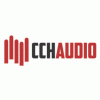Radio Chatter and Computer Voices
All is going very well for the moment and I've reached the stage where I want to add two new sound elements to the game.
The first is radio chatter - the idea is not to reproduce the full chatter but more a brief phrase that will draw the player's attention to a longer message displayed on the screen (for example phrases such as 'under attack' or 'hostile ships detected'). What I'd like to do is take voice recordings of these basic phrases and rework them to give the impression they are being transmitted by radio (so potentially clipping of the sound and addition of static, etc)
Secondly I want to add a ship's computer voice for phrases such as 'shields down', 'engines activated', etc. Here again I would like to distort a normal voice recording to add a more 'metallic' sound while avoiding it sounding like a speech synth voice.
Could anyone give advice on a good way of achieving one or other of these, ideally with a tool that will not cost a fortune (this is an indie hobby project with very limited budget ... time but no money!)? For info I have been using Audacity for other sound effect editing, but am willing to consider other options.
Many thanks.
Audio Production for Media - Music, Sound Effects, Voice & More!
My Portfolio on GameDev.net I My Entire RF Library I Latest Items
Website I Recent Work I YouTube I SoundCloud I Facebook I Steam
If your budget is really tight, and you have a manageable number of lines, for the radio voice, try recording your voice into your cell phone voice mail. Then record the playback with a close directional mic.
If you want to record full fidelity , then try using audacity, etc and putting a narrow band filter on the sound. Get rid of everything below about 400Hz, and above 3kHz. Then compress the heck out of the sound using any dynamic range compressor.
Brian Schmidt
Executive Director, GameSoundCon:
GameSoundCon 2016:September 27-28, Los Angeles, CA
Founder, Brian Schmidt Studios, LLC
Music Composition & Sound Design
Audio Technology Consultant
For each of the "styles" I used multiple, overlapping layers. The effect is based mostly on guitar amp simulators, namely Guitar Rig and Amplitube (both have "free" versions for you to use). The entire thing is squashed by using loads and loads of compression. Additionally, down-tuning a layer or two by 1-3 semitones seemed to enhance it dramatically. Cutting some low end and a bit of high end makes it more audible. Then it's just a matter of clearing it up with surgical EQ and sculpting it a little. Bit Crushers and additional tube saturation can also come in handy.
I can dig up the archives for the specific effect chains and processes I used if you are really interested.
For computer voice, aside from the mentioned vocoder, I would also advise using a heavy ring modulator and mix it with "raw" material. A very nice effect can be achieved by using pitch correction software like Melodyne with dramatic quantization and pitch change settings. I'm not sure if there are any free alternatives or built-in tools for Audacity to achieve this though.
A few useful free plug-ins:
http://www.native-instruments.com/en/products/komplete/guitar/guitar-rig-5-player/
http://www.ikmultimedia.com/products/amplitubecs/
http://illformed.org/plugins/
http://www.softube.com/index.php?id=satknob
http://kunz.corrupt.ch/products/tal-vocoder
http://kunz.corrupt.ch/products/tal-effects
Many thanks for all the detailed advice ... absolutely exactly what I was after so very much appreciated. I'll start experimenting based on your advice and see what comes out of the process!
Audio Production for Media - Music, Sound Effects, Voice & More!
My Portfolio on GameDev.net I My Entire RF Library I Latest Items
Website I Recent Work I YouTube I SoundCloud I Facebook I Steam
I'm glad I could help!Basically the idea was to develop a template. I had over 300 phrases to edit, which meant to save time I had to make something uniform and fool-proof enough.These are the FX chains and key parameters for style "A". I'm just going to say it's most likely not the most efficient way and might seem like an overkill at places. It took quite a lot of experimenting before I got it exactly the way I liked. In most cases some things could probably be left out and not really make much difference, but obviously a lot depends on source material. It should give you a better idea anyway.Layer 11. Transpose (-3 semitones)2. Exciter - Drive to max, 68% Mix3. EQ 1 - +9dB boost 500Hz - 4kHz (a slight dip around -3dB at 1kHz, with moderate Q seemed to make it better)4. Compressor (Sonitus FX) - almost instant Attack, short Release, Ratio 7:2, Soft Knee5. Compressor (T-Racks Classic) - Attack 30ms+, long Release, lots of Drive6. Clipper (T-Racks Classic) - Drive 5dB+7. Compressor (GR5 Tube) - slow Attack, slow Release, loads of Gain8. De-Esser (VX-64) - 2kHz, 86% depth9. EQ 2 (VX-64) - +6dB boost at 2kHz, narrow Q10. Low-Pass Filter (Camel Space HP2 BQ) - 10kHz, Resonance 15%11. Clipper 2 (T-Racks Classic) - 7dB+ drive12. High-Pass Filter - 500HzLayer 21. EQ 1 - narrow boost at 500Hz2. Amp (GR5 Citrus) - Gain 7+, Bass 9+, Treble 4-, Presence 13. Compressor (NI VC2A) - lots of Gain, medium Peak Reduction5. Compressor (T-Racks Opto Comp) - Compression 6+4. SoftTube Saturation Knob - half way up, "Keep Low"5. Limiter (T-Racks Multiband) - Drive 10dB+6. Low-Pass Filter - 3kHzLayer 31. Transpose (-1 semitone)1. Distortion (A3 Metal Distortion) - very low "Level" and "Dist"2. Amp (A3 Metal Lead T) - moderate Gain3. Compressor (T-Racks Opto Comp) - Compression 3+4. Exciter - Drive 50%5. Tape Emulation (Kramer Master Tape) - A bit of gain6. High Pass Filter - 2kHzMaster Bus1. EQ for removing all excessive resonance and generally unwanted artifacts2. Multi Band Compressor3. LimiterOf course volumes between the layers had to be adjusted and I had to play with volume and automation envelopes on a couple of clips so nothing sticks out a lot. You probably wouldn't have to take care of low end that much, I used RODE NTG2 for recording and few clips suffered from proximity effect. For the DAW I used Sonar (I think it was X2 at the time), most of the modern multi-tracks would do anyway.
Cool effect, I tried it out as you described out and it sounds pretty cool. Very much that military radio kind of voice.
Seems like the general idea is
Pitch Shift Down
Over Compress
Cut Highs/Lows
Run Through an Amp








